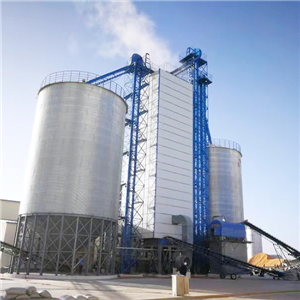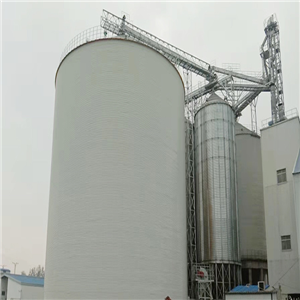Innovations in Grain Storage: Transforming Food Security and Sustainability
25-03-2025
The Current State of Grain Storage
Traditional grain storage methods have long been plagued by challenges. In many developing countries, a significant portion of the grain harvest is lost due to improper storage. Estimates suggest that up to 40% of grains in sub - Saharan Africa and South Asia are lost annually to factors like pests, moisture, and poor ventilation. These losses not only impact local food availability but also have far - reaching economic consequences, especially for small - scale farmers who rely on their grain yields for income.
Technological Innovations in Grain Storage
Advanced Monitoring Systems: One of the most significant advancements in grain storage is the development of sophisticated monitoring systems. These systems use sensors to continuously track temperature, humidity, and pest activity within storage facilities. For example, companies like GrainPro have introduced wireless sensor networks that can be placed throughout a grain silo. These sensors send real - time data to a central control unit, allowing farmers and storage managers to detect and address issues promptly. In a large - scale storage facility in the United States, the implementation of such a system reduced grain spoilage by 25% in the first year alone.
Smart Silos: Smart silos are another innovative solution revolutionizing grain storage. These silos are equipped with IoT (Internet of Things) technology, enabling remote monitoring and control. Farmers can access information about their grain storage, such as fill levels, quality, and environmental conditions, through a mobile app. In Australia, a network of smart silos has been established, allowing farmers in remote areas to manage their grain storage efficiently, even when they are miles away from their farms. This has led to a 30% increase in the efficiency of grain handling and storage operations.
Sustainable Practices in Grain Storage
Natural Pest Control: In an effort to reduce the use of chemical pesticides and promote sustainable storage, natural pest control methods are gaining traction. The use of diatomaceous earth, a natural powder made from the fossilized remains of diatoms, is one such method. When applied to stored grains, it damages the exoskeletons of insects, causing them to dehydrate and die. In India, many farmers have started using diatomaceous earth in their grain storage, reducing their reliance on chemical pesticides by up to 60%.
Energy Efficient Storage: Energy efficient storage solutions are also on the rise. Solar - powered ventilation systems are being installed in grain storage facilities worldwide. These systems use solar panels to generate electricity, which powers the ventilation fans. In a large - scale storage complex in Europe, the use of solar - powered ventilation systems has reduced electricity consumption by 40%, cutting down on operational costs and the carbon footprint associated with grain storage.
The Role of Grain Storage in Food Security
Food security is intricately linked to effective grain storage. Properly stored grains can bridge the gap between harvest seasons, ensuring a stable food supply throughout the year. In regions prone to droughts or floods, such as parts of Africa and Southeast Asia, reliable grain storage can help mitigate the impact of these natural disasters on food availability. By reducing post - harvest losses, more grains are available for consumption, directly contributing to food security at the local, national, and global levels.
Future Outlook for Grain Storage
The future of grain storage looks promising, with continued research and development in new technologies and sustainable practices. Nanotechnology, for example, holds great potential for improving grain storage. Nanoparticle - based coatings can be applied to storage containers to enhance their barrier properties, preventing moisture and pests from reaching the grains. Additionally, the development of more efficient and affordable storage solutions for small - scale farmers in developing countries remains a key area of focus. By investing in innovative grain storage, we can not only safeguard the world's food supply but also promote sustainable agriculture for generations to come.
In conclusion, grain storage is no longer a static aspect of the food supply chain. With the continuous influx of innovative technologies and sustainable practices, it is evolving into a dynamic and crucial element in ensuring food security and promoting environmental sustainability. The innovations in grain storage are not only reducing losses but also enhancing the overall efficiency and resilience of the global food system.




